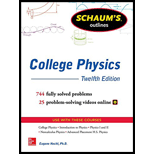
Concept explainers
Draw diagrams to indicate qualitatively the position, nature, and size of the image formed by a converging lens of focal length f for the following object distances: (a) infinity, (b) greater than 2f, (c) equal to 2f, (d) between 2f and f, (e) equal to f, (f) less than f.
(a)
The position, nature, and size of the image formed by a converging lens of focal length
Answer to Problem 15SP
Solution:
The image is formed at the focus and is inverted, real, and highly diminished.
Explanation of Solution
Introduction:
Employ the rules of ray diagram for a convex lens to determine the position, nature, and size of the image formed.
Explanation:
The resulting ray diagram for an object kept at infinity is drawn below:
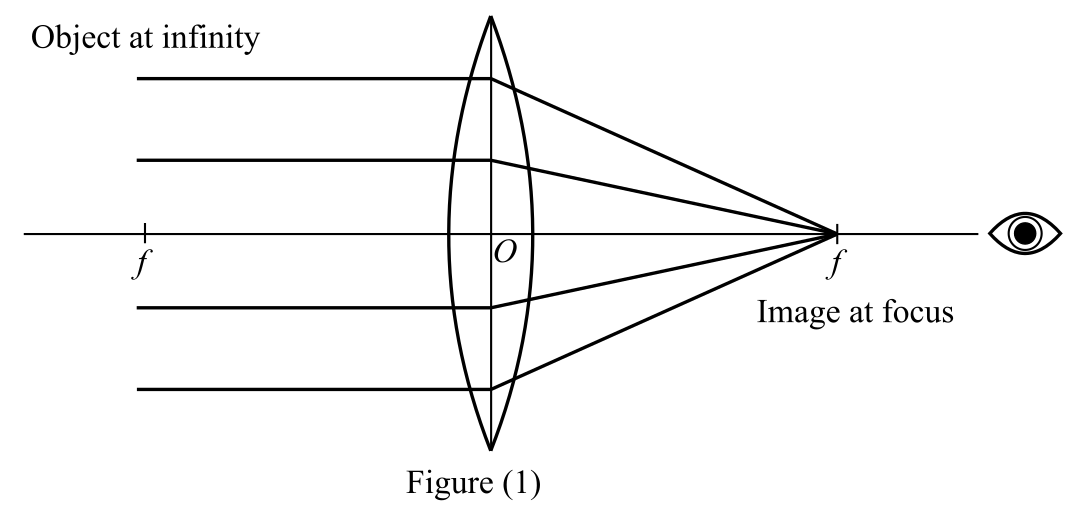
From the ray diagram given above, it is clear that the image is formed at the focus and is inverted, real, and highly diminished.
Conclusion:
Therefore, when the object is kept at an infinite distance from the lens, the image is formed at the focus and is inverted, real, and highly diminished.
(b)
The position, nature, and size of the image formed by a converging lens of focal length
Answer to Problem 15SP
Solution:
The image is formed between
Explanation of Solution
Introduction:
Employ the rules of ray diagram for a convex lens to determine the position, nature, and size of the image formed.
Explanation:
The resulting ray diagram for an object kept at a distance greater than
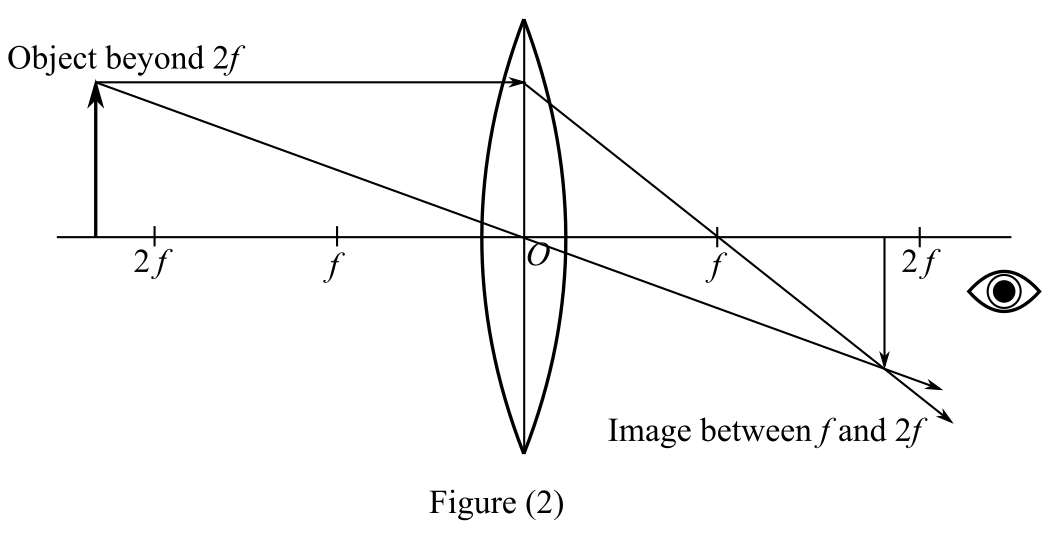
From the ray diagram given above, it is clear that the image is formed between
Conclusion:
Therefore, when the object is kept at a distance greater than
(c)
The position, nature, and size of the image formed by a converging lens of focal length
Answer to Problem 15SP
Solution:
The image is formed at
Explanation of Solution
Introduction:
Use the rules of ray diagram for a convex lens to determine the position, nature, and size of the image formed when the object is placed at
Explanation:
The resulting ray diagram for an object kept at a distance of
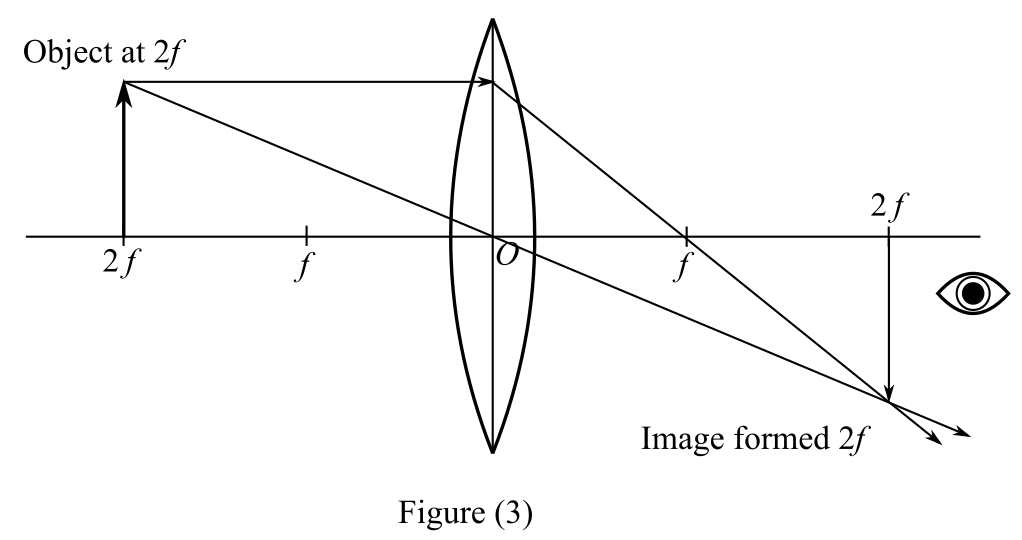
From the ray diagram given above, it is clear that the image is formed at
Conclusion:
Therefore, then the object is kept at a distance of
(d)
The position, nature, and size of the image formed by a converging lens of focal length
Answer to Problem 15SP
Solution:
The image is formed beyond
Explanation of Solution
Introduction:
Here, we shall employ the rules of ray diagram for a convex lens to determine the position, nature, and size of the image formed.
Explanation:
The resulting ray diagram for an object kept at a distance between
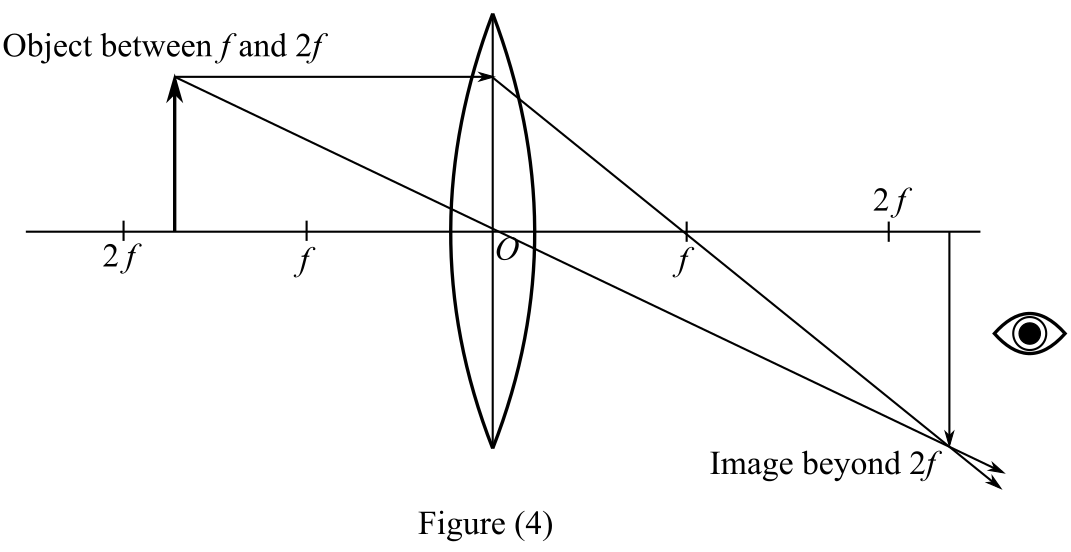
From the ray diagram given above, it is clear that the image is formed beyond
Conclusion:
Therefore, when the object is kept at a distance between
(e)
The position, nature, and size of the image formed by a converging lens of focal length
Answer to Problem 15SP
Solution:
The image is formed at infinity and is erect, virtual, and magnified.
Explanation of Solution
Introduction:
Use the rules of ray diagram for a convex lens to determine the position, nature, and size of the image formed, when the object is kept at a distance
Explanation:
The resulting ray diagram for an object kept at a distance
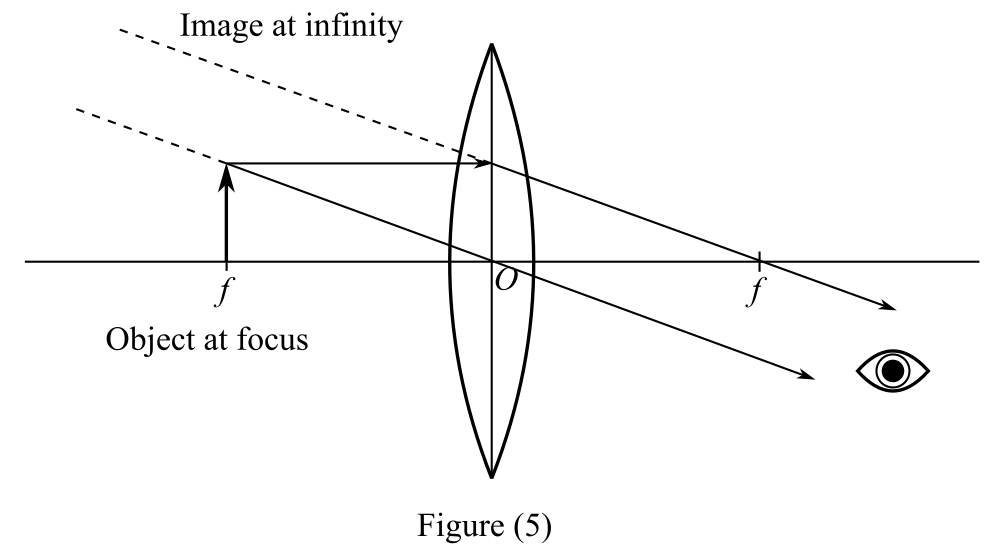
From the ray diagram given above, it is clear that the image is formed at infinity and is erect, virtual, and magnified.
Conclusion:
Therefore, when the object is kept at a distance
(f)
The position, nature, and size of the image formed by a converging lens of focal length
Answer to Problem 15SP
Solution:
The image is formed beyond
Explanation of Solution
Introduction:
Here, we shall employ the rules of ray diagram for a convex lens to determine the position, nature, and size of the image formed.
Explanation:
The resulting ray diagram for an object kept at a distance less than
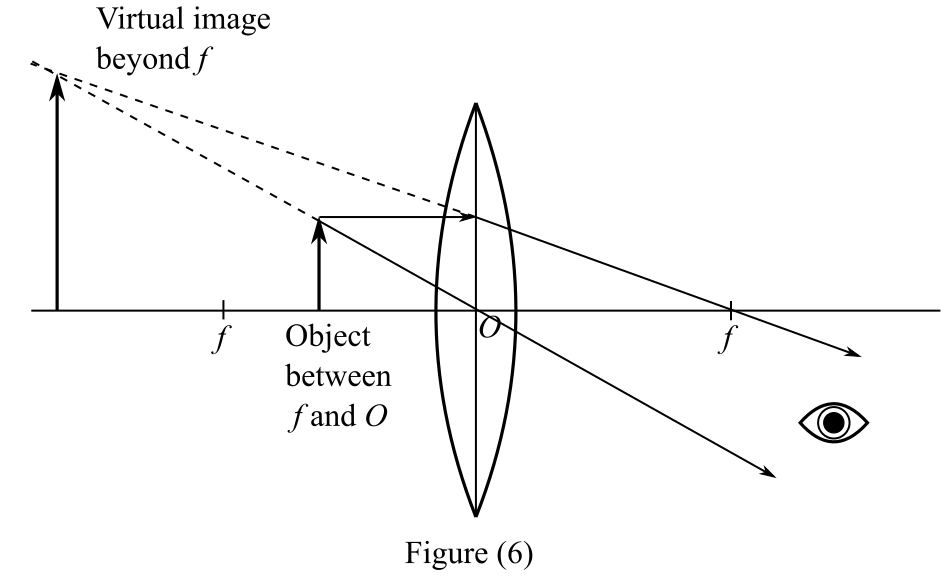
From the ray diagram given above, it is clear that the image is formed beyond
Conclusion:
Therefore, when the object is kept at a distance less than
Want to see more full solutions like this?
Chapter 38 Solutions
Schaum's Outline of College Physics, Twelfth Edition (Schaum's Outlines)
- No chatgpt pls will upvotearrow_forwardSolve and answer the question correctly please. Thank you!!arrow_forward་ The position of a particle is described by r = (300e 0.5t) mm and 0 = (0.3t²) rad, where t is in seconds. Part A Determine the magnitude of the particle's velocity at the instant t = 1.5 s. Express your answer to three significant figures and include the appropriate units. v = Value Submit Request Answer Part B ? Units Determine the magnitude of the particle's acceleration at the instant t = 1.5 s. Express your answer to three significant figures and include the appropriate units. a = Value A ? Unitsarrow_forward
- Solve and answer the question correctly please. Thank you!!arrow_forwardSolve and answer the question correctly please. Thank you!!arrow_forwardA spiral transition curve is used on railroads to connect a straight portion of the track with a curved portion. (Figure 1) Part A v = v₁ft/s 600 ft y = (106) x³ If the spiral is defined by the equation y = (106)³, where x and y are in feet, determine the magnitude of the acceleration of a train engine moving with a constant speed of v₁ = 30 ft/s when it is at point x = 600 ft. Express your answer to three significant figures and include the appropriate units. ? a = Value Unitsarrow_forward
- When the motorcyclist is at A, he increases his speed along the vertical circular path at the rate of = (0.3t) ft/s², where t is in seconds. Take p = 360 ft. (Figure 1) Part A 60° Ρ B If he starts from rest at A, determine the magnitude of his velocity when he reaches B. Express your answer to three significant figures and include the appropriate units. v = Value Submit Request Answer ་ Part B ? Units If he starts from rest at A, determine the magnitude of his acceleration when he reaches B. Express your answer to three significant figures and include the appropriate units. 11 ? a = Value Unitsarrow_forwardThe car starts from rest at s = 0 and increases its speed at a₁ = 7 m/s². (Figure 1) Part A = 40 m Determine the time when the magnitude of acceleration becomes 20 m/s². Express your answer to three significant figures and include the appropriate units. ? t = Value Units Part B At what position s does this occur? Express your answer to three significant figures and include the appropriate units. s = Value Submit Request Answer ? Unitsarrow_forwardSolve and answer the question correctly please. Thank you!!arrow_forward
 University Physics Volume 3PhysicsISBN:9781938168185Author:William Moebs, Jeff SannyPublisher:OpenStax
University Physics Volume 3PhysicsISBN:9781938168185Author:William Moebs, Jeff SannyPublisher:OpenStax Principles of Physics: A Calculus-Based TextPhysicsISBN:9781133104261Author:Raymond A. Serway, John W. JewettPublisher:Cengage Learning
Principles of Physics: A Calculus-Based TextPhysicsISBN:9781133104261Author:Raymond A. Serway, John W. JewettPublisher:Cengage Learning Physics for Scientists and Engineers: Foundations...PhysicsISBN:9781133939146Author:Katz, Debora M.Publisher:Cengage Learning
Physics for Scientists and Engineers: Foundations...PhysicsISBN:9781133939146Author:Katz, Debora M.Publisher:Cengage Learning Physics for Scientists and EngineersPhysicsISBN:9781337553278Author:Raymond A. Serway, John W. JewettPublisher:Cengage Learning
Physics for Scientists and EngineersPhysicsISBN:9781337553278Author:Raymond A. Serway, John W. JewettPublisher:Cengage Learning Physics for Scientists and Engineers with Modern ...PhysicsISBN:9781337553292Author:Raymond A. Serway, John W. JewettPublisher:Cengage Learning
Physics for Scientists and Engineers with Modern ...PhysicsISBN:9781337553292Author:Raymond A. Serway, John W. JewettPublisher:Cengage Learning Glencoe Physics: Principles and Problems, Student...PhysicsISBN:9780078807213Author:Paul W. ZitzewitzPublisher:Glencoe/McGraw-Hill
Glencoe Physics: Principles and Problems, Student...PhysicsISBN:9780078807213Author:Paul W. ZitzewitzPublisher:Glencoe/McGraw-Hill





